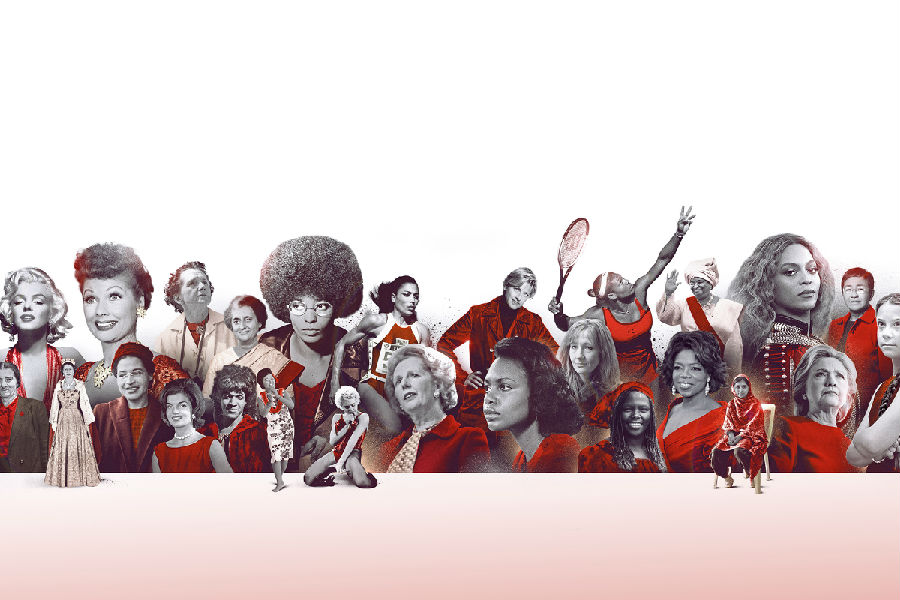100 Women Of The Year, A Century Redefined
100位年度女性賦予一個世紀的全新內涵
By Nancy Gibbs
文/南希·吉布斯
Throughout its history, editors of TIME aimed their curiosity at those who broke free of gravity.
縱觀歷史,《時代》周刊編輯們的好奇心指向的一直都是那些沖破藩籬的人物。
Week after week, year after year, the magazine featured an individual on the cover,
周復一周,年復一年,周刊每期都選出了一位封面人物,
often from Washington but also from Wall Street or Hollywood, from foreign palaces and humming factories, all outstanding and almost always men.
這些人物大多來自華盛頓,卻也有來自華爾街或好萊塢的,來自外國宮殿甚至是來自嗡嗡作響的工廠車間的,但他們無一例外都是杰出人物,且無一例外幾乎全是男性。
The "great man theory of history,” so aligned with the American gospel of bootstraps and bravado, meant that power boiled down to biography,
與自力更生,故作勇敢的美國信仰嚴絲合縫的“偉大男性定論歷史”的論調意味著權力歸根結底就是傳記,
and to be on the cover of TIME meant that you had, literally, made big news.
而登上《時代》周刊封面就意味著你,真的,成了轟動一時的大人物。
I wonder how different those weekly assessments would have been had there been any women in the room where they were made.
我很好奇,如果負責評估的房間里有女性成員,這些每周一次的評估又會有何不同?
It would be many decades before TIME's leadership included many women, 90 years before a woman ran the whole thing.
《時代》周刊用了數十年才迎來了第一批女性領導,用了90年才迎來了第一位統領周刊一切事務的女性領導。
Likewise in Congress and courtrooms and corner offices and ivory towers,
國會、法庭、角落(經理)辦公室乃至象牙塔里的情形也一樣,
it was largely men who were writing the first draft of history, deciding what mattered, and who mattered, and why.
書寫歷史初稿,決定何事重要,何人重要,為何重要的大多都是男性。
So now that we are marking anniversaries,
正因為如此,值此周年紀念之際,
it was an irresistible exercise to go back and look again, at different ways of wielding power, and the different results derived.
回顧歷史,重審歷史,審視行使權力的各種方式及不同方式產生的不同結局就成了本刊形勢所趨,不可不為之舉。
Women were wielding soft power long before the concept was defined.
早在“軟實力”這一概念被定義之前,女性就已經在行使這一權力了。

On the 100th anniversary of women's suffrage,
值此女性獲得選舉權100周年之際,
TIME's editors and collaborators revisited each year since 1920, looking for women whose reach transcended their time.
《時代》周刊的編輯和供稿團隊回顧了1920年以來的每一年,力圖發掘每一個超越時代的女性。
Their influence in public and private life was not always positive;
她們對社會和個人的影響或許并非總是正面的影響;
part of this exercise is acknowledging failures and blind spots as well as genius and vision.
但我們這一舉措的目的也不止是為了向天才和遠見致意,還是為了承認她們的失敗和盲點。
There were always women who wore the crown, literal or not:
歷史從不缺乏王冠加頂的女性,無論是具體意義還是抽象意義上的王冠:
Queen Soraya Tarzi of Afghanistan or Queen Elizabeth II of England, global stateswomen like Golda Meir, Indira Gandhi, Margaret Thatcher, Corazon Aquino.
阿富汗的索拉亞·塔齊女王,英國的伊麗莎白二世女王,又或是戈爾達·梅爾、英迪拉·甘地、瑪格麗特·撒切爾、科拉松·阿基諾那樣的世界領袖。
But it is interesting that the first woman to appear on the cover of TIME, in the summer of 1923,
然而,有趣的是,首次登上《時代》周刊封面的女性是一位宣稱將結束退休生活,到美國巡演的,
was an Italian actor named Eleonora Duse, who had announced that she would come out of retirement to tour the U.S.
名叫埃莉諾拉·杜絲的意大利演員,其登上封面的具體時間為1923年夏天。
"Her art rises to supremacy through her magnificent repression," TIME wrote, "her submersion of personality in her part.”
“她的演技通過驚人的抑制(情緒外露),”《時代》周刊評價道,“和對角色個性的深入打磨得到了升華。”
Honor and glory through "magnificent repression"—a parable of herstory.
通過“驚人的抑制”表演獲得榮譽和榮耀——一部講述她故事的寓言。
Some art forms are more subversive than others, telling stories on the surface with countless layers beneath.
有一些藝術形式比其他藝術形式更具顛覆性,它們表面是在講故事,內里卻充滿了一層又一層的內涵。
From a hardscrabble childhood in Chattanooga, Tenn.,
盡管童年時期在田納西州查塔努加過得十分清苦,
the great blues artist Bessie Smith made her way from street busker to singer to such success that she traveled in a custom railcar.
偉大的布魯斯藝術家貝西·史密斯還是一步一步從街頭藝人變成了能夠乘坐定制火車出行的超級歌手。
She recorded "Downhearted Blues" in 1923,
她1923年錄制的《憂傷的布魯斯》
which went on to sell nearly 800,000 copies within the year and eventually made Smith the highest-paid black entertainer of her era.
當年的銷量就達到了近80萬張,也讓她成了她那個時代收入最高的黑人藝人。
She sang of prison and betrayal and capital punishment, of poverty and pain and the complex loves of an openly bisexual woman in the '20s.
她歌唱監獄、背叛和死刑,歌唱貧窮和痛苦,歌唱20年代一位公開的雙性戀女性的復雜愛情。
How do we measure that influence on generations of African-American protest music?
我們要如何衡量她的這些歌曲對后世非裔美國人的反抗音樂的影響呢?
譯文由可可原創,僅供學習交流使用,未經許可請勿轉載。











